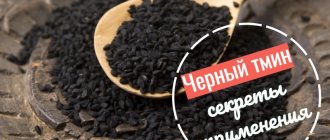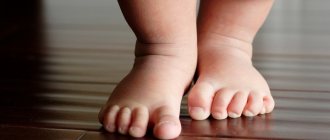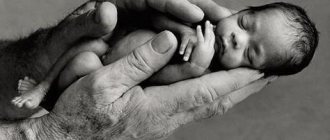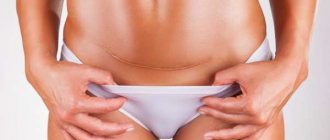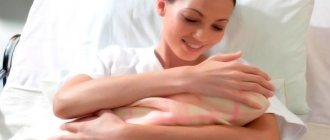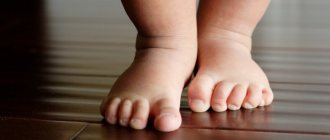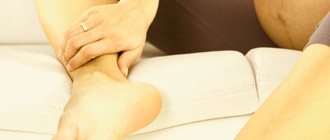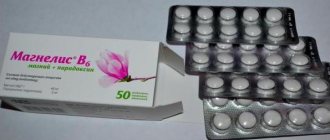Visiting the pool and exercising in the water is a great way to spend time relaxing, regaining your figure, improving your health and putting your body in order. But this is exactly what a woman needs after childbirth. But in this case, the question arises whether a nursing mother can swim in the pool without harm to lactation and the baby. In this article we will look at how you can combine water procedures and breastfeeding. Let's find out how long and when you can go to the pool after giving birth.
Rules for visiting the pool for a nursing mother
Gynecologists and pediatricians recommend that breastfeeding women start going to the pool three months after giving birth. After a caesarean section and in case of complications after childbirth, it is not recommended to go to the pool for the first six months of breastfeeding. In the first six months, it is also not recommended to perform strenuous physical activity and do water aerobics. What sports are suitable for a woman with breastfeeding, see here.
The first visits to the pool should be with minimal stress and short duration, preferably under the supervision of an instructor. Gradually, the load and swimming time can be increased. So, the first trips to the pool should last no more than 30 minutes.
After three or four visits, the duration of swimming is increased by 10-15 minutes, after the next three or four workouts - by another 15 minutes. However, if a nursing mother worked out in the pool during pregnancy, you can speed up the increase in the intensity of the classes within reasonable limits, but only under the supervision of an instructor!
At first, it is recommended to only walk or swim quietly in the water to prevent overload and prepare the muscles for more serious loads. Otherwise, injury may occur! Then you can move on to exercises to strengthen the muscles of the legs, lower back and abs, but avoid stress and pressure on the chest, shoulders, and arms.
When is the best time to start swimming?
Exercises on water help tone stretched muscles, get rid of excess weight, and restore elasticity to the skin. Improving metabolic processes and strengthening the immune system is also very important for the mother’s body. During the stressful period after childbirth, the calming effects of swimming and being in the aquatic environment also play an important role.
You can start swimming in the pool after childbirth when the cervix closes completely and the discharge (lochia) stops - usually this happens after 1-1.5 months. Before your first visit, you must undergo an examination by a gynecologist. If the birth was difficult, you will have to postpone any physical activity until your health is restored. In case of injuries and ruptures, you should not swim in the pool until the stitches have completely healed.
Swimming while breastfeeding in the first months after birth is not allowed. The process of establishing lactation often occurs with complications, and the mammary gland becomes extremely vulnerable to infection. Therefore, doctors recommend starting to swim during breastfeeding no earlier than 3-4 months after birth.
The benefits of exercising in water for a nursing mother
Let us note right away that exercises in water are easier than standard sports. At the same time, they exceed the latter in terms of effectiveness. This is achieved due to the fact that a person in the water is practically weightless. And water pressure increases blood circulation and increases the effectiveness of exercise. In addition, in the cool water of the pool, the human body is forced to warm up, as a result of which a large amount of fat is lost.
Training in water performs a number of important functions, namely:
- Effectively burn fat and help a nursing mother lose weight and regain her previous figure;
- Increase and strengthen immunity;
- Strengthens muscles and blood vessels;
- Restore back muscles;
- Prevents diseases of the heart, blood vessels and musculoskeletal system;
- Help with scoliosis, osteochondrosis, problems with posture and spine;
- Improve blood circulation;
- Stimulate the supply of oxygen to the brain, improve memory and brain activity;
- Stabilize hormonal levels after childbirth;
- Normalizes sleep, soothes and helps with insomnia;
- They energize and relieve fatigue, improve mood and help fight postpartum depression.
A big plus of exercise in water is that it is a low-impact sport, which is especially important for women during breastfeeding. In addition, they create a special psychological mood and comfort. And to enhance the effect, you can use special safe exercises.
Effective and safe exercises in water for nursing
Underwater running can be practiced from the very first visits to the pool. It involves running in one place at a waist-deep or shoulder-deep depth. When performing the exercise, you need to keep your back straight and your stomach retracted. Raise your knees as high as possible, trying to touch your chest. At the same time, the socks are pulled up; for convenience, you can bend your elbows. Start with 10-15 lifts of each leg and increase the number of approaches in subsequent sessions. By the way, for greater results, you can use specialized shoes for running and walking on the bottom. It increases the load on the muscles of the thighs, legs and buttocks.
Regular leg swings are also effective. To perform the exercise, the arms are extended to the sides and the legs are fixed in a straight position. Then, in turn, raise each leg as high as possible. It is important to keep your back higher and not bend your knees, otherwise you will not achieve the desired result. Swings are performed 15 times for each leg. Gradually increase the number of swings.
Skier's steps are another effective and safe exercise for nursing mothers. Place your feet shoulder-width apart and extend your arms up. Start sliding along the bottom, imitating the steps of a skier. To do this, slightly bend the leg you are walking with, and leave the other straight. When moving, help with your hands. In this case, it is also enough to take 15 steps on each leg. By the way, shoes for walking and running along the bottom will also come in handy here.
Tips for visiting the pool during breastfeeding
- Before going to the pool for the first time, be sure to consult with your doctor;
- During lactation, you should not load the shoulder girdle or do exercises with pressure on the muscles of the shoulders, chest and arms. This increases the amount of lactic acid, which can worsen lactation and also lead to the baby refusing breast milk;
- In case of caesarean section, difficult childbirth and illnesses, you need to wait for complete recovery and healing of the sutures. In this case, it is not recommended to visit the pool in the first six months after childbirth;
- The first visit to the pool, in the absence of contraindications, is recommended two to three months after the birth of the baby;
- The first three to four classes should be held calmly without physical exertion and no more than thirty minutes;
- Suitable exercises for a nursing mother are walking in the pool, short swimming and exercises for the legs, abs and lower back;
- Breastfeeding women should not perform many exercises at once, overloading the muscles and body;
- After the pool, thoroughly rinse off the chlorine in the shower; when drying, do not rub your nipples and breasts with a towel, but only lightly blot the skin! Do not forget to use special breast and nipple care products when breastfeeding;
- You should not go to the pool or swim in bodies of water if a nursing mother has cracks and abrasions on her nipples. Bleach or contaminated water from a lake or river can get into the wounds, which will increase irritation and worsen the problem. In addition, infection can get through water! Therefore, it is better to wait until the nipples are completely healed;
- With a six-month-old baby, you can already start going to the pool together. By the way, today special programs have been developed that are designed for swimming with babies as early as two to three months.
The sea after childbirth
Many women ask questions about visiting the sea after giving birth. The problem is that the water in the pool is constantly disinfected and undergoes sanitary control. The sea is a living “organism” in which there are a lot of bacteria, viruses and various microorganisms, the safety of which no one can vouch for.
How soon can you swim in the sea after giving birth?
“Uncomplicated” childbirth implies the absence of incisions and any inflammatory processes, including exacerbation of previously diagnosed ones.
How to stay safe near water
Even if the first swim in the sea takes place 6 months after giving birth, a woman must adhere to certain safety rules while on the shore:
- wipe the body immediately after water procedures (water and the sun of the sea coast are too aggressive on the skin and in most cases cause burns);
- Be sure to treat your breasts with a cream that has the ability to protect it from ultraviolet rays.
- While sunbathing, a nursing woman's breasts should be covered with a thin cloth; it is highly undesirable for them to be exposed to direct sunlight.
Swimming in the sea and visiting the pool have a beneficial effect on overall health and speed up the process after childbirth. Such procedures are not prohibited by doctors, you just need to strictly follow their recommendations and not rely on “maybe”. Childbirth and the recovery period are stressful for the body; you should not “shock” it even more.
Every new mother strives to create ideal conditions for the growth and development of her newborn baby.
An important aspect in this case is breastfeeding. This process is important not only for the baby, but also for the mother. In the process, many questions arise that are not so easy to answer.
Many women are interested in whether a nursing mother can bathe? Subject to certain rules, this is not prohibited.
Swimming in the pool with a baby
Swimming together not only has a positive effect on the development of the baby and the woman’s condition, but also helps to establish close contact and establish a relationship between mother and child. Water classes with the baby first begin in the bathtub, and only then move to the pool.
Infants can start swimming in the pool at the age of two to three months. The main thing is that there are no contraindications, and by this time the umbilical wound has completely healed. Therefore, before visiting the pool, be sure to consult your pediatrician.
Swimming in the pool has a beneficial effect on the emotional, physical and physical development of the child. Exercises in water perform the following useful functions for the baby:
- The baby quickly adapts to new living conditions;
- With regular exercise in the pool, children begin to sit, crawl and walk faster, and hold their head more confidently;
- Helps straighten fingers, arms and legs;
- Increases immunity and resistance to various diseases, strengthens the body;
- Improve the functioning of the respiratory organs, lungs and produce “deep” breathing;
- Stimulate blood circulation and blood pressure;
- Facilitate the work of the heart and stabilize the heart rhythm;
- Positively affect the condition of nerve cells and activate brain function;
- Prevent the development of allergies;
- Stimulate and improve the functioning of the musculoskeletal system.
Swimming in water improves the emotional state and relieves fears, as in the water the baby relaxes, feels more confident and becomes bolder. In addition, children become calmer, less capricious, eat better and sleep better. Such exercises strengthen and relax muscles at the same time. By the way, it has been proven that exercises in water and water procedures are much more beneficial and effective for the development of infants than massage.
At what age can you take your child for water treatments?
Without special contraindications from a pediatric therapist, a child can be taken for water procedures starting from 6 months of age. There are special groups for visiting water procedures for a nursing woman and baby, in which classes are structured taking into account the characteristics of the child’s body.
Mothers with small children under one year old and older often have to breastfeed in the most unexpected places: in the pool, on the beach, in transport, in a clinic, in a cafe and restaurant. In addition, doubts often arise: is it possible for a nursing mother to play sports, take cosmetic and health procedures?
Water sports and water sports
For athletes, as well as for other nursing mothers, too active, exhausting sports activities in the first 9 months after childbirth are undesirable.
, since
physical fatigue reduces lactation
or can cause lactostasis. However, the moderate workouts that you allowed yourself during pregnancy can be resumed 4-5 weeks after giving birth.
In principle, professional athletes of any sport can gradually return to exercise from 3 months, but monitor the child’s weight and count diapers. For the rest, it is better to postpone physical activity for up to nine months.
Bath and hot water
If you love a bathhouse, don't deny yourself. You can begin such procedures a little at a time 3 months after birth.
, focusing on your own feelings in the bathhouse. An active flow of milk may begin, so keep a towel nearby. It is advisable to go to the bathhouse with your child only after two years; if he doesn’t want to, don’t force him.
Pool and hot water
Start visiting the pool together with your child
possible from about 9 months, and only if you are sure that the establishment complies with hygiene standards. Accordingly, you can also feed there, because... The baby will most likely ask for the breast to calm down after physical activity and cold water.
If you decide to travel without a child, it is better to do this after 6 months
, as it implies a prolonged absence of the mother.
milk
may begin to actively flow in your pool . In this case, you can return to the shower and stand under a warm shower, expressing until you feel relief.
Bathhouse.
When visiting a bathhouse, sometimes there is an involuntary leakage of milk; after the bathhouse, the flow of milk may be difficult for some time. After the bath, a change in the water balance in the body occurs. A person loses some fluid there. So try not to feel thirsty after the bath. You can visit the bathhouse, especially if you are used to it and do it no more than once a week.
Solarium.
Ultraviolet radiation does not affect milk production in any way. But you need to know that hormones produced during lactation tend to stimulate the growth of breast tissue. UV irradiation can have a negative effect on the growth of dividing cells. It is not recommended to abuse ultraviolet radiation during pregnancy and breastfeeding because there is a hypothetical possibility of stimulating the subsequent development of breast cancer. You can use a solarium if you really want to and take all precautions into account. But I wouldn't do it myself.
Massage.
Massage is an event that changes and stimulates blood and lymph circulation, so massage is not recommended. No professional massage therapist will give a general massage to a pregnant or breastfeeding woman.
how necessary is it for a mother to take vitamins for breastfeeding women when breastfeeding a baby... Can taking vitamins by a mother cause allergies in the baby?
Taking vitamins and their benefits is a rather controversial issue. Vitamins very often cause allergies in the child and mother. So see what seems more important to you. Either look for vitamins that actually absorb and provide benefits, or it is better to take nothing at all. When it comes to nutrition and medications for nursing mothers, there is one rule - you need to be 100% sure that the product is harmless. if in doubt, it is better to cancel.
Is it possible for me, as a nursing mother, to go swimming in the city pool? Doubts stem from the fact that the water in the pool is chlorinated and is still cool. Is this harmful for lactation? After all, breasts must be protected from colds.
It is not so much the chest that needs to be protected from colds, but the entire body. Avoid hypothermia and do not freeze in the pool; warm up after swimming in a sauna or under a warm shower; Pay attention that the swimsuit does not squeeze the breasts - this is a more common cause of stagnation of milk after the pool than the cold water itself. Rinse after swimming to remove any remaining chlorinated water. And swim to your health! You should be attentive to yourself, do not overwork, avoid exercises that can injure your chest (bruise, pressure). You can “cold” your chest to the same extent as your throat by leaving the pool without drying your hair or without taking off wet clothes. Just after class, don’t let your swimsuit dry out on you, quickly change clothes and dry yourself, and hurry to go outside. Milk does not disappear from exertion, it may slightly change in taste, since during physical activity, muscles secrete lactic acid, the substance penetrates into the milk and can slightly change its taste, but after about an hour, the effect of the acid is neutralized. So, if upon arrival from training you invite your son to breastfeed, he will not feel the difference ;-). All this is very individual. There are no contraindications to such activities for a nursing mother, but you need to be careful and gentle with yourself
I'm breastfeeding for the 9th month. Can I go jogging? We need to somehow put our figure in order???
There are also some features of the figure of nursing mothers: nature dictates that a nursing mother gets better at about 3-6 months of breastfeeding, and after nine months of breastfeeding she begins to lose weight, and pretty soon becomes slender and graceful. This is due to the consumption of subcutaneous fat depots that provide lactation, which are formed in a woman’s arms, thighs and abdomen. As a result of prolonged breastfeeding, they are gradually consumed, and the woman loses weight. Breastfeeding for more than two years is optimal for maintaining a good figure. Due to too much exercise and too much moisture loss, milk production may decrease, so do not forget to increase your water intake. You need to start with familiar exercises (for which you do not put much effort) and very, very slowly increase the pace and amount of load. To restore your back after childbirth, it is best to take a course of general massage.
Is it possible to perm my hair if I am breastfeeding my baby (for 8 months now)?
Breastfeeding itself allows a mother to get a perm. However, one must keep in mind that due to changes in the hormonal background of a nursing mother, some changes may occur in the structure of her hair, and the perm procedure, even with familiar means, may have an unexpected result. It is worth choosing the most gentle option, and remember that nothing may work out.
Is it possible to have hair highlights while breastfeeding? I read that you can dye it, but they highlight, as it seems to me, with stronger preparations.
Hair highlighting can be done while breastfeeding. It is advisable to contact a good specialist to carry out highlighting with certified preparations. You can also warn the specialist who will do your hair highlighting that you are a nursing mother
Is it possible to dye the hair of a nursing mother? paint -loreal preferans
Yes, you can dye your hair with modern hair dyes; they do not penetrate the body. But this needs to be done either in a salon or in a well-ventilated area: the gases released when dyeing hair pose some danger.
Why does breastfeeding protect against pregnancy only up to six months, because in previous generations G.V. was it 100% contraceptive?
Breastfeeding is not contraception at all. Contraception is the absence of ovulation that occurs during breastfeeding. But the anovulatory period is different for everyone: some have two years, and some have two months. And no one can say exactly when you will ovulate. So, neither before six months nor after, breastfeeding is a reliable contraception. It was the same in previous generations; the physiology has not changed. The only thing is that in traditional societies, on average, women’s periods come later, since the social factor is at work there. Oddly enough, when a woman thinks her period is “about to start,” it actually starts. And in traditional societies, women believe that they will not have periods while breastfeeding, and indeed they do not. Just installation - nothing more. But this is only in truly traditional and far from civilization societies
the child is 6 months old. The child is breastfed and has been introduced to one complementary food made from vegetable puree. I wanted to go to the solarium. Is it possible for a nursing mother to sunbathe in a solarium, if not, then why?
There are no obvious contraindications for tanning procedures in a solarium while breastfeeding. But it should be noted that if any creams and products are used on the skin to improve the effect of tanning, they may contain substances that negatively affect the milk, or may have a specific smell that the baby will not like. In addition, during breastfeeding, as well as during pregnancy, women continue to actively secrete growth hormones, so moles and spots often increase in size, and specific pigmentation may occur. And ultraviolet irradiation enhances these reactions. So, once again it’s worth thinking about whether it’s really necessary.
The shape of the breast is extremely difficult - after all, it is a gland, not a muscle. The breasts prepare for feeding even during pregnancy, and even if the mother did not breastfeed at all, the shape of the breasts will still change. Long-term breastfeeding does not affect breast shape. Its shape is determined genetically. After all, there are women who have breasts until old age, and for some they change shape after 30, even if the woman was not pregnant. So I’m afraid we are beyond our power to influence the shape of the breasts :-) As for the figure, this is also too individual. Even during pregnancy, most women's bodies accumulate fat reserves, which are deposited mainly on the hips and shoulders. This is a reserve in case of natural disasters, famine, etc. During the first year of a child’s life, it becomes exhausted and after a year of feeding, the excess weight is lost by itself, the mother does not have to make any effort for this. Dieting while breastfeeding is not advisable and can even be dangerous. Your body may interpret this in its own way and begin to store fat reserves even from the most innocent foods, for example, from lettuce. Reasonable restrictions on carbohydrates, I think, will not hurt (i.e. less sweets and starchy foods :-))
Does sex life affect lactation? Isn't it decreasing?
An extremely active sex life changes the balance between the main hormones responsible for lactation, oxytocin and prolactin, towards an increase in the amount of oxytocin. Milk secretion is facilitated and production is reduced. Oxytocin is the hormone responsible for the release of milk from the mammary gland. Some breastfeeding women experience milk leakage during intercourse. Prolactin is the hormone responsible for the formation of milk.
GW consultants answered
Recovery after childbirth is not only the stabilization of the hormonal system and metabolic processes, but also the return of the figure to its usual framework. Of course, drawing up a training schedule requires consulting a doctor and taking into account the progress of labor.
One of the effective methods of regaining your figure is considered to be exercise in the pool. Water gymnastics (aqua aerobics) and banal swimming have many times more benefits than regular physical exercise.
Read in this article
Rules for swimming in the pool with a baby
Before going to the pool with your child, be sure to consult your pediatrician. The first sessions should not last longer than ten minutes. After the second or third trip, you can gradually increase the duration of swimming to thirty minutes. Contact an instructor and he will select special exercises for mother and baby. In addition, you can attend special programs and training for infants.
Children with a fever or a cold, congenital heart disease, convulsions and serious disorders of the nervous system, or dangerous disorders of the musculoskeletal system should not be taken to the pool. If a child has diarrhea, it is not recommended to bathe for at least two days. If you have dermatitis or skin problems, you should also not swim, as chlorinated water will only increase irritation and worsen the problem.
Before starting classes, let your child get used to the water. Spray the baby a little, but be careful not to get any water in your eyes! During the procedures, talk to your baby and support the baby so that he feels supported and is not afraid. Immediately remove your child from the pool and warm him with a towel if he is cold. More detailed rules for swimming, as well as swimming exercises for infants, can be found at https://vsormi.ru/general-questions/plavanie-s-grudnichkom/.
